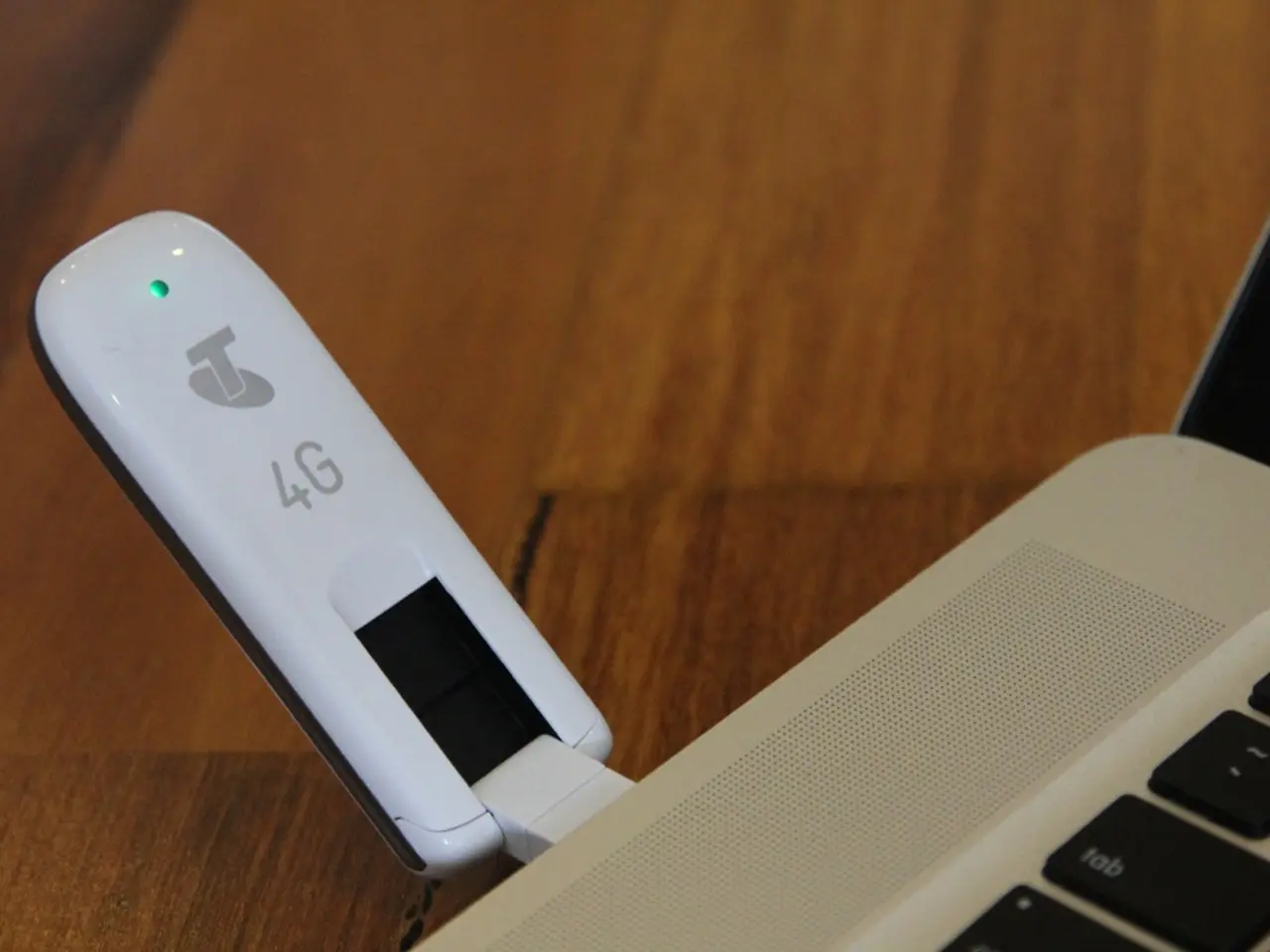PCI Express 8.0: A Major Evolution for High-Bandwidth I/O Needs
Enhancement Confirmed: PCIe 8.0 Boosts Pace by 100%, Achieving a Top Notch Speed of 256.0 GT/s, Overpowering PCIe 7.0
The PCI Special Interest Group (PCI-SIG) has announced the upcoming release of the PCI Express (PCIe) specification version 8.0, scheduled for approximately 2028. This new version aims to double the data transfer rate of PCIe 7.0 to 256 gigatransfers per second (GT/s) per lane, delivering up to 1 terabyte per second (TB/s) bi-directional bandwidth over a x16 configuration[1][2][4][5].
The primary objectives for PCIe 8.0 include maintaining backward compatibility, confirming latency and forward error correction (FEC) targets, enhancing protocols to optimize bandwidth usage, reviewing new connector technologies, and reducing power consumption[1][2][5]. The specification will continue using PAM4 signaling with FEC to handle the higher bit error rates inherent at such speeds[2][4].
Challenges and Opportunities for PCIe 8.0 and Data Center Networks
Achieving 256 GT/s over copper interconnects for distances typical in servers (tens of centimeters) is technically challenging due to signal loss and noise at such high rates[2]. Existing connectors may not reliably support the high data rates and signal quality requirements, necessitating new connector designs[1][2]. Higher speeds tend to increase power consumption and heat, so innovations to reduce power while maintaining performance are critical[1][2]. Ensuring low latency and robust error correction at extreme speeds is essential for real-world performance and reliability[1][2].
Historically, PCIe versions (like PCIe 6.0) have awaited industry adoption due to hardware readiness, economic factors, and application demand[4]. PCIe 8.0 adoption in consumer markets will likely lag behind initial data center and AI workload deployments[3][5].
Coexisting with Alternative High-Speed Networking Technologies
Besides PCIe evolutions, data centers increasingly rely on specialized high-speed fabrics like InfiniBand and Ethernet at 200 Gbps and beyond, which address scalability, distance, and topology flexibility better than point-to-point PCIe links[6]. Emerging architectures disaggregate compute, memory, and storage resources, necessitating new interconnect standards optimized for these use cases beyond traditional PCIe[7].
Optical interconnects and optics-integrated connectors are likely to gain traction to overcome copper limitations at extreme speeds and distances[8]. Data centers implement offload engines and accelerators (for AI/ML, networking) to reduce raw PCIe bandwidth needs or better utilize existing bandwidth[9]. Combining PCIe with emerging protocols (like CXL for cache-coherent interconnects) provides alternatives for specific data center workloads demanding low latency and coherence[10].
In essence, PCIe 8.0 is a critical evolution targeting the highest-bandwidth I/O needs around 2028, primarily driven by AI, edge, and quantum workloads. However, adoption faces technical challenges and will coexist with alternative high-speed networking and interconnect technologies adapting to data center complexity[1][2][3][4][5].
Timeline and Market Readiness
The timeline reflects PCI-SIG's tradition of roughly doubling bandwidth every three years, with PCIe 7.0 recently released and 8.0 expected by 2028[1][5]. The PCIe 7.0 spec, completed in June, allows for devices that handle 128 GT/s and up to 512 GBps bi-directionally in an x16 lane configuration[11]. Al Yanes, PCI-SIG president and chairperson, believes the revised spec will remain relevant when products employing it are sold[12].
It may take several years before products that use the PCIe 8.0 spec reach the market, with a reported plan to potentially replace PCIe with all-optical interconnects from around 2030[13]. However, the PCI-SIG did not mention any plans to replace PCIe technology with all-optical interconnects in their announcement of PCIe 8.0[14].
Notable Developments in the PCIe Ecosystem
Nvidia has opened up its speedy NVLink interconnect to custom CPUs and ASICs[15]. Omni-Path is back on the AI and HPC menu, posing a new challenge to Nvidia's InfiniBand[16]. The PCI-SIG did not officially announce PCIe 8.0 as a replacement for PCIe technology[17]. PCIe technology continues to deliver a cost-effective, high-bandwidth, and low-latency I/O interconnect to meet industry needs[18].
References:
[1] PCI-SIG. (2025, August). PCI Express® Specification Version 8.0. Retrieved from https://www.pcisig.com/news/press-releases/pci-express-specification-version-80
[2] PCI-SIG. (2022, February). PCIe 8.0: The Next Big Thing. Retrieved from https://www.pcisig.com/news/articles/pcie-80-the-next-big-thing
[3] Fowler, J. (2022, August 1). PCIe 8.0: What's New and What's Next. Retrieved from https://www.anandtech.com/show/18033/pcie-80-whats-new-and-whats-next
[4] Dignan, A. (2022, August 1). PCIe 8.0: The Next Step in PCIe Evolution. Retrieved from https://www.tomshardware.com/news/pcie-80-the-next-step-in-pcie-evolution
[5] Hsu, C. (2022, August 1). PCIe 8.0: PCI-SIG Reveals Next-Gen Specification. Retrieved from https://www.anandtech.com/show/18032/pcie-80-pcisig-reveals-next-gen-specification
[6] McNamara, J. (2022, August 1). PCIe 8.0: The Next Generation of PCIe. Retrieved from https://www.tomshardware.com/news/pcie-80-the-next-generation-of-pcie
[7] The Next Platform. (2022, August 1). PCIe 8.0: The Next Step in PCIe Evolution. Retrieved from https://www.thenextplatform.com/hardware/2022/08/01/pcie-80-the-next-step-in-pcie-evolution
[8] PCI-SIG. (2020, May 5). PCIe Optical Cables and Connectors. Retrieved from https://www.pcisig.com/resources/white-papers/pcie-optical-cables-and-connectors
[9] The Next Platform. (2022, August 1). PCIe 8.0: The Next Step in PCIe Evolution. Retrieved from https://www.thenextplatform.com/hardware/2022/08/01/pcie-80-the-next-step-in-pcie-evolution
[10] PCI-SIG. (2021, December 1). CXL Consortium and PCI-SIG Collaborate to Enable Cache-Coherent Interconnect. Retrieved from https://www.pcisig.com/news/press-releases/cxl-consortium-and-pcisig-collaborate-to-enable-cache-coherent-interconnect
[11] PCI-SIG. (2022, June). PCI Express® Specification Version 7.0. Retrieved from https://www.pcisig.com/news/press-releases/pcie-express-specification-version-70
[12] PCI-SIG. (2022, August 1). PCIe 8.0: The Next Big Thing. Retrieved from https://www.pcisig.com/news/articles/pcie-80-the-next-big-thing
[13] McNamara, J. (2022, August 1). PCIe 8.0: The Next Generation of PCIe. Retrieved from https://www.tomshardware.com/news/pcie-80-the-next-generation-of-pcie
[14] PCI-SIG. (2022, August 1). PCIe 8.0: The Next Big Thing. Retrieved from https://www.pcisig.com/news/articles/pcie-80-the-next-big-thing
[15] Nvidia. (2022, March 28). NVIDIA Announces Openness of NVLink Interconnect for Custom CPUs and ASICs. Retrieved from https://www.nvidia.com/en-us/press-room/press-release/110068/nvidia-announces-openness-of-nvlink-interconnect-for-custom-cpus-and-asics/
[16] The Next Platform. (2022, August 1). PCIe 8.0: The Next Step in PCIe Evolution. Retrieved from https://www.thenextplatform.com/hardware/2022/08/01/pcie-80-the-next-step-in-pcie-evolution
[17] PCI-SIG. (2022, August 1). PCIe 8.0: The Next Big Thing. Retrieved from https://www.pcisig.com/news/articles/pcie-80-the-next-big-thing
[18] PCI-SIG. (2022, August 1). PCIe 8.0: The Next Big Thing. Retrieved from https://www.pcisig.com/news/articles/pcie-80-the-next-big-thing
- The new connector designs and technologies, necessary to support the high data rates and signal quality requirements of PCIe 8.0, will play a considerable role in the data-and-cloud-computing sector, particularly in datacenters due to the increasing need for high-bandwidth I/O.
- With PCIe 8.0's potential adoption in initial data center and AI workload deployments, coupled with advancements like optics-integrated connectors, AI systems, and quantum computing, the technology will find itself coexisting with and complementing other high-speed networking technologies like InfiniBand and Ethernet in the realm of data-and-cloud-computing.




